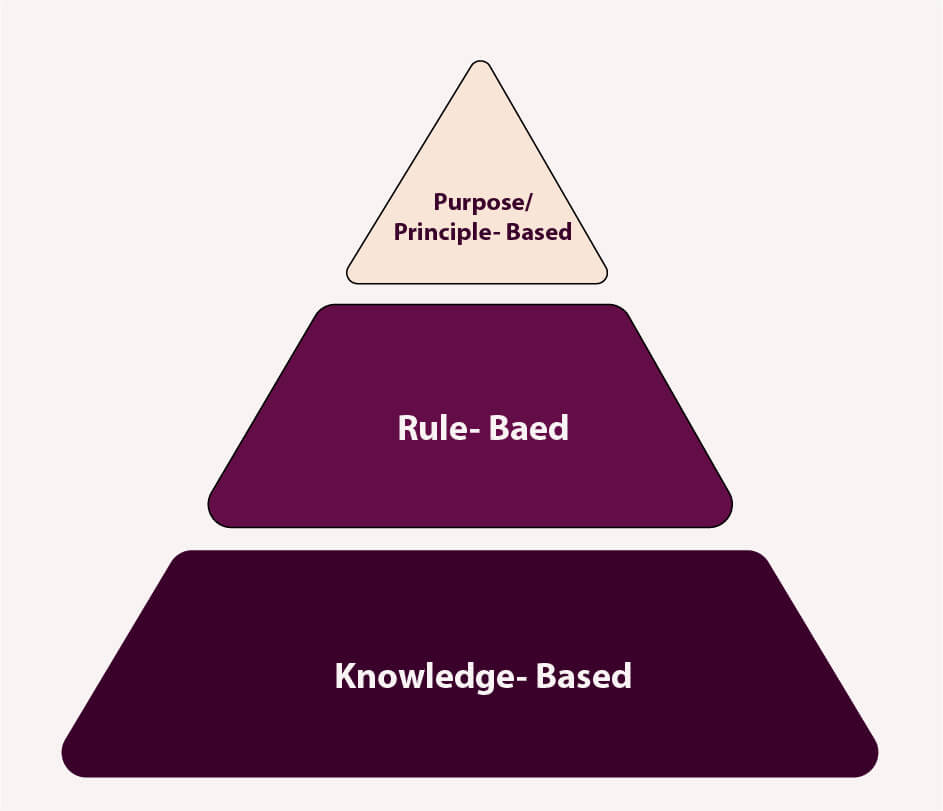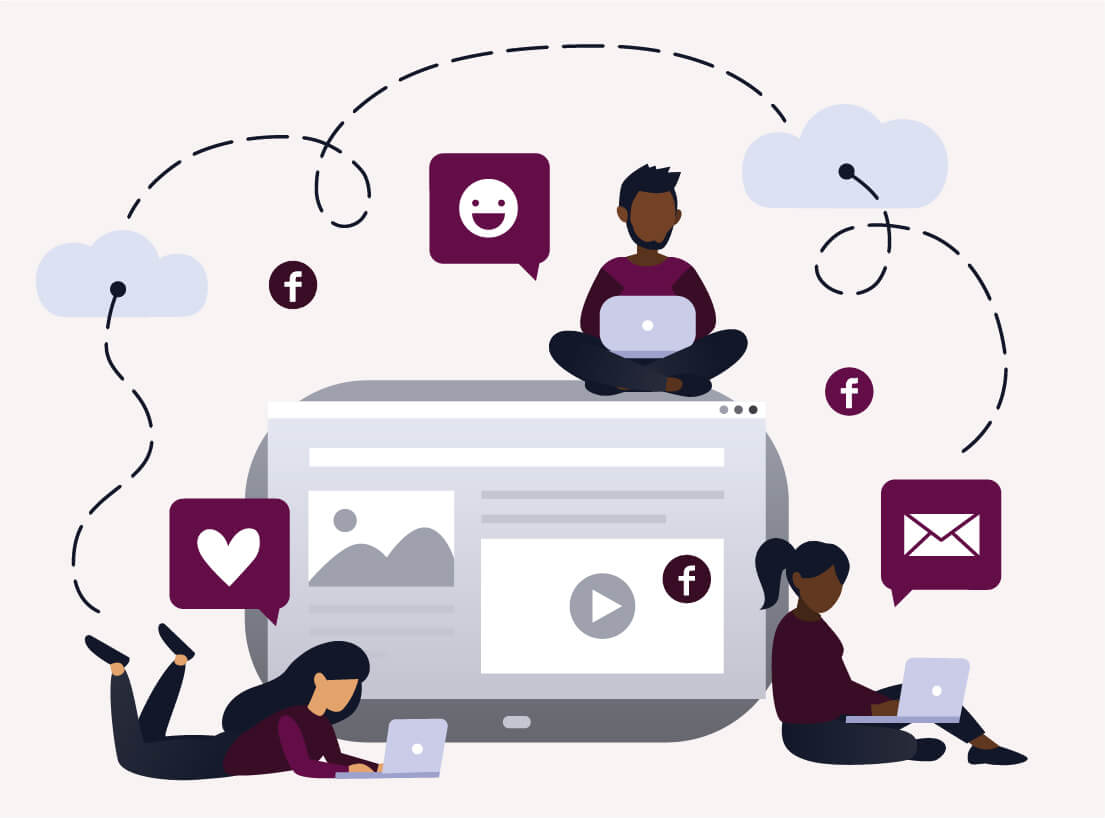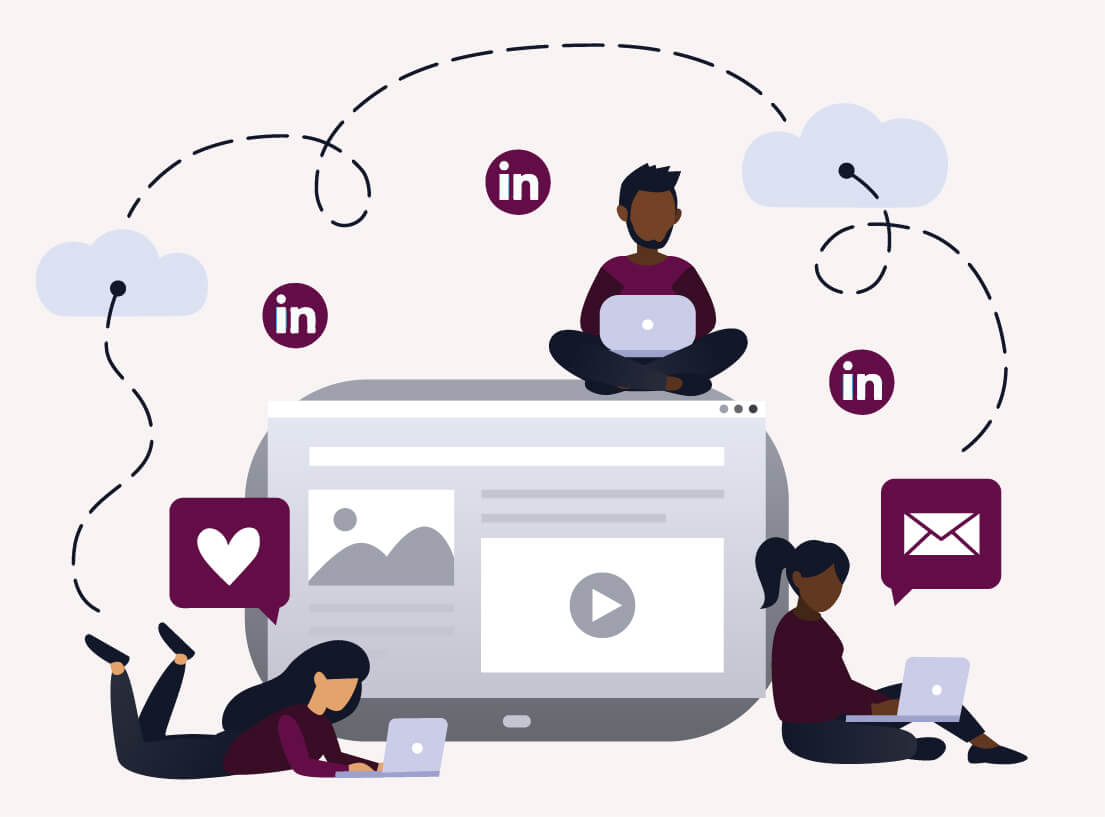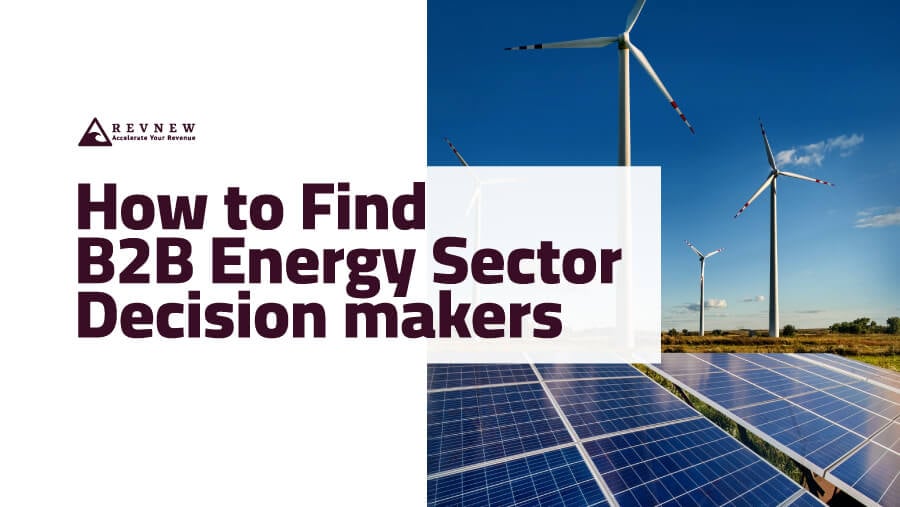
How to Find B2B Energy Sector Decision makers: A Complete Guide for 2024
Are you trying to find B2B energy sector decision-makers’ attention or struggling to find the right prospects in the energy sector? Then you have landed at the right place.
Undoubtedly, you have an excellent, high-end product ready to aid the energy industry. But, targeting decision-makers in the energy sector will be tougher than other business sectors. It is correct, as the energy sector is a high-scale and regulated business area. However, learning about the ideal decision makers can make your marketing processes and efforts smoother.
Don't worry; Let’s start with understanding who are the decision makers in the energy industry. Then, we’ll move on to targeting these prospects.
Understanding Who Are The Key Decision-Makers
In general key decision makers in a business include:- CEO (Chief Executive Officer) - Responsible for overseeing the overall strategy and operations of the company.
- COO (Chief Operating Officer) - Responsible for the company's day-to-day operations.
- CFO (Chief Financial Officer) - Responsible for the company's financial management, including budgeting, accounting, and financial reporting.
- Board of Directors - A group of individuals elected by shareholders to oversee the company's management and make key decisions.
- Department heads or managers - Responsible for decision-making within their specific departments.
These individuals play a crucial role in determining the direction and success of the business.
However, the specific decision makers may vary depending on the size and structure of the company.
The Decision-Making Pyramid
B2B marketers can create a more effective marketing strategy by understanding and targeting different levels of the Decision-Making Pyramid. Additionally, it helps better influence customer purchasing behavior.

The Decision-Making Pyramid consists of the following:
1. Knowledge-Based Decisions - This level refers to decisions based on readily available information. Businesses must provide clear and accurate product information to influence purchasing decisions in this context.
For example, product specifications and reviews.
2. Rule-Based Decisions - At this level, target accounts make decisions based on rules or guidelines. A business can target this type of decision-making by highlighting its products' features and benefits that align with customers' values or preferences.
For instance, choosing the cheapest option or an eco-friendly product.
3. Purpose/principle-Based Decisions - This level involves decisions based on personal values, beliefs, and goals.
You can target this type of decision-making by promoting their brand values and communicating their social impact.
For example, customers may choose a particular brand because they support the company's social or environmental initiatives.
8 Best Practices for Targeting B2B Energy Sector Decision-Makers
- Learn Your Target Customers Needs
- Build Relationships All The Way To The Top
- Conduct Live Webinars
- Taking Advantages Of Linkedin And Facebook Ads
- Know Your Ideal Customer Profile (ICP)
- Creating Your Account List
- Using ABM Technology For High-Value Targets
- Leverage The Power Of Referrals
1. Learn Your Target Customer’s Needs
Let’s help you identify and engage key B2B decision makers in the energy sector. Note that each target account plays a unique role in the energy industry.
Thus, read their roles below to determine how to market to them. Let’s begin:
- Governments:
Often, governments address energy efficiency by adopting energy-saving policies, products, or services.
Thus, they seek B2B partnerships that can enhance their goals. - Technical Contractors:
Skilled and technical professionals or contractors are responsible for installing energy-efficient products. They also have to integrate energy efficiency into existing systems and efficiencies. These contractors also need to communicate the benefits of energy efficiency to regular consumers to make them participate in voluntary market-based programs.
Thus, when you target technical professionals/contractors, your relationship with them won't end after they purchase your product. In fact, you'll be helping them succeed in leading voluntary market-based programs. - Manufacturers and Retailers
This category of your target accounts affects the availability of energy-efficient services/products in the market. Most retailers and manufacturers actively participate in different kinds of energy sector programs. They aim to support the government’s voluntary market-based programs.
Thus, you'll need to research these things before including them in your target audiences. - Non-Governmental Organizations (NGOs)
NGOs work by soliciting support for initiatives related to energy efficiency among policymakers. They have close ties with communities, with helps them ensure the success of energy efficiency programs.
2. Build Relationships All The Way To The Top

81% of customers are more likely to close another purchase after they experience positive customer service. Relationship building is an important element that assures positive customer service. Here's how you can achieve it:
- Understand the needs of your prospects: To find B2B energy sector decision makers to buy your products, you can follow the following method:
- Understand their needs
- Adjust your marketing approach accordingly.
- Show you genuinely care: Being friendly and personal without compromising your professional values goes a long way. Find out:
- The interests of your prospects
- Learn about special occasions in their lives (Anniversaries, birthdays), etc.
- Fulfill your claims: When you make specific promises about customer experience and your organization ensures to deliver that promise.
For example, if your business claims to be there for customers 24/7, then execute it sincerely. The practice is closely related to the unique value proposition of your organization.
3. Conduct Live Webinars

Focus on figuring out what your prospects want to accomplish and what is the driving force behind their motivation. Once you know it, you gain adequate insights about your prospects. It’ll help you develop effective ideas and topics that will speak to your target audience.
Moreover, Live webinars are the best way to value your audience immediately. In fact, 95% of businesses consider webinars essential to their marketing strategy. Using a webinar, sales leaders can provide the right training and knowledge of your product. They can also show your company's expertise in the energy field.
Live webinars also build rapport and relationships with prospects by giving value first. Creating and promoting a thought leadership webinar is the way to establish your authority among the target audience. Here are a few tips for doing so:
- Select a thought-provoking topic while also considering industry trends.
- Create visually compelling and engaging presentation slides.
- Illustrate your points using the whiteboard tools.
- Ensure your live webinar session is interactive with the target audience.
4. Taking Advantages Of LinkedIn And Meta Ads
Benefits of using Meta Ads:

- The social media networking site lets you place ads in front of a large-scale audience. Here you may find your target prospects.
- Creating and placing Meta ads are cheaper and stay longer on the platform.
Thus, boosting the chances of your prospects noticing them. - Meta ads feature tools to ensure targeted client reach for businesses. Instead of displaying your ads in front of random people, Meta ads study the criteria of your target audience group and place your ads on their feeds.
- If your content management team has amazing creative ideas to introduce your business to targeted B2B decision makers, then ensure to work on it. Meta is the best place to make your content gain maximum visibility.
Benefits of using LinkedIn ads

- LinkedIn allows you to leverage granular targeting of your ideal prospects. You can adjust identifiers to include and exclude your prospects' seniority level, industry type, interests, behavior, product specifics etc., allowing you to create highly targeted ads.
- LinkedIn ads let you find your ideal customers by searching across the self-reported data of its users and matching it with your uploaded companies' list or customer list of email addresses.
- The platform allows business accounts to add lead-capture forms, a built-in feature that automatically fills with a user's account information.
Thus, instead of sending your prospects to another landing page, you can get all the needed information on the same page without breaking their engagement.
5. Know Your Ideal Customer Profile (ICP)
You must define your ICP to make your sales prospect list more effective. ICPs offer 68% higher target account win rates. Below is the list of elements you must consider while building your ICPs to identify your most valuable and highly convertible accounts:
- Industry: When you describe your prospects' industry, be specific as much as possible. For example, companies specializing in controlling/tracking energy consumption will work better than "Energy-based businesses."
- Size: Add the approximate company size that has the biggest requirement of your product.
- Budget: An estimate of your target account's budget and how much you want them to spend on your product/services.
- Location: If you prefer in-person relationship building with your prospects, you must mention the locations of your close proximity.
- Market positioning: Pick the ideal market situation for your targeted prospects. For example, dominating the segment with a stronghold against competitors, under expectations last quarter, and filing for bankruptcy.
- Pain Points: Include issues your ideal prospects face, and make sure your product must solve them.
- Objectives: What are the goals your ideal customers want to achieve?
- How Your product/service Solves Their Problem: How you can solve the issue they are facing and help them reach their goals.
You can also include factors like whether the prospect organization is looking for a particular solution and technology usage.
6. Creating Your Account List
You just got done with creating the ideal attributes you are looking for in your prospects. Now, let us see how you can use it to create your account list. Follow the below-given steps:
- Ask Your Sales Team:
You have to align your sales team for the account list building to identify and engage key decision-makers of the industry you serve. Your sales team is likely already working on finding potential customers who can bring high-value returns. Ask them who they want to target specifically and why. Estimate the outcomes and likelihood of selected accounts to respond while curating the list. - Google It:
You can easily get the top 10 list for anything you search for on Google. So, Google the best/top companies in your niche industry. Additionally, google the characteristics of the companies based on your ICP and use the provided information. - Local Business Organizations:
If your target prospects are local businesses, then check out the local Better Business Bureau, rotary club, chamber of commerce, rotary club, Google Maps, or other localized business organizations. You can get all the essential information to get started. - LinkedIn:
Identify your potential prospect companies using the wide filtering options provided by LinkedIn. You can filter your search by company size, location, etc.
7. Using ABM Technology For High-Value Targets
You require access to high-quality and accurate data to run an account-based marketing campaign. To avoid making it labor-intensive, consider using ABM marketing services. It requires inputs from your ICP to generate an account list matching your criteria.
Next, export the data and directly connect with the most appropriate point of contact across the listed target accounts.
However, you must equip your sales and marketing teams with ABM technology tools to perform a successful ABM strategy. Here are 2 ways to do so:
- Implement an end-to-end ABM platform with all functions necessary to complete each step of the targeting process.
- Establish an account-based program with the help of your existing marketing technology stack. Plus, you can add other tools as required to scale the process.
Now, let's see a list of the most effective ABM communication channels you need to use to aid the success of your ABM campaign:
- Content syndication
- Paid media campaigns
- Segmented email campaigns
- Sponsorships, partnerships, events
- Social media networks
8. Leverage The Power Of Referrals
Did you know that referred customers are 4x more likely to refer other potential customers to your business? This makes referrals even more important for your marketing efforts.
Though you can use multiple ways to run a referral program, emails are one of the best ways to do so. Here's how to use emails for referrals:
- Invite email
Start by showing a willingness to continue your business with your customer by sending an Invitation email. You can begin by informing them of more products, deals, and special offers. It can make them feel nurtured, leading to customer loyalty. Next, invite them to refer their contacts to check out your business. - Reminder email
This email is for prospects who need a subtle push to share your business with their contacts who might benefit from your products. Offer a free subscription or access to certain product features when they refer you to others. - Reward email
If your customer's referral shows a willingness to do business with you, send a reward to the customer to show your gratitude. You can reward them with discounts in the next subscription renewal on the product that they use.
3 Mistakes You Should Avoid In The Targeting Process
1. Neglecting Psychographic Profiles And Prioritizing More Demographics
Demographics can kick-start effective targeting, but psychographic segmentation can take it to the next level. It specifies customers based on their values, personality, lifestyle interests, and other factors. Psychographic segmentation is a powerful way of selling similar services or products to people across different demographics.
You can visualize your customer through democratic information and deeply understand your customer in an intuitive, sophisticated, and highly accurate method with psychographic information. Moreover, you can create marketing messages which appeal more directly to the target accounts. Some examples of psychographic segmentation include:
- Core values of prospects
- What motivates them to achieve certain goals
- They want to make profits or impact society
2. Targeting Too Small Or Too Broad Customer Base
It's very important to have a specific market to target, but getting too specific can leave you with a small number of leads to target. It indicates that your market can quickly become saturated, resulting in limited sales opportunities due to high competition and a small target market. However, it can work well if you sell niche products at a high price.
On the other hand, don't approach an unnecessarily broader audience to get in front of more people. It results in vague marketing approaches and forces your business to uninterested customers. In simple words, it is similar to spamming.
So, what can be done to ensure your customer targeting is balanced? The answer is simple: identity who will find your products beneficial. Do not narrow your information, but use hard data, including surveys, market research, and online analytics, to figure out how much you can widen your market.
3. Forgetting About Top-Of-Funnel Prospects
Most of your competitors only focus on targeting bottom-of-funnel prospects, which include people ready to make the purchase decision. This leaves targeting top-of-funnel prospects with much lesser competition. These are the decision-makers in the research phase of buying products/services similar to your niche. It allows you to spend less in targeting them due to less competition.
The best way to connect with top-of-funnel prospects is to answer their questions. Anticipate their questions, use data to track their interests, and provide them with information accordingly. You can use effective outbound strategies for this purpose, such as cold calling or cold emailing. This will introduce your service/product to potential customers early on.
Conclusion
In conclusion, to identify and engage key decision makers, you must review your target accounts' websites and their organizational structure, management team, and board of directors. Ensure to contact industry professionals, attend industry events, and join relevant industry associations. It’ll help build your network and learn more about the key decision-makers in the energy business.
Finally, utilize business directories, such as LinkedIn and Crunchbase, to research the key players in the energy industry and find out who holds key positions within companies.
You can train your sales and marketing team to do the job or connect with Revnew to do it for you more effectively. We have expertise in generating high quality energy leads with the right decision makers to ensure success.




